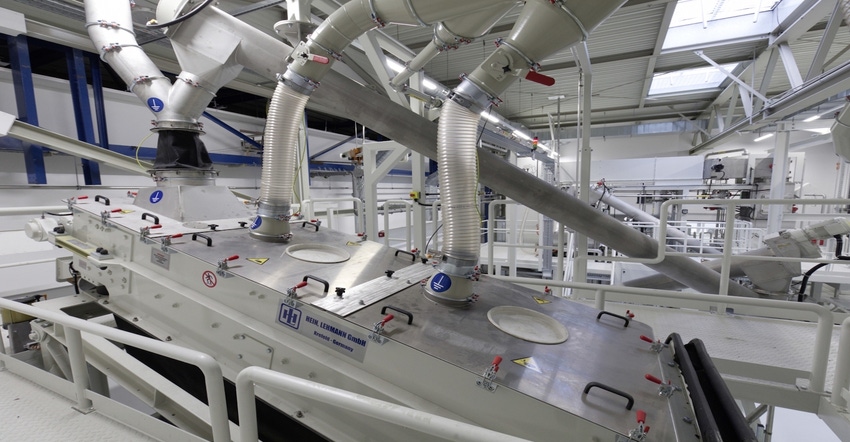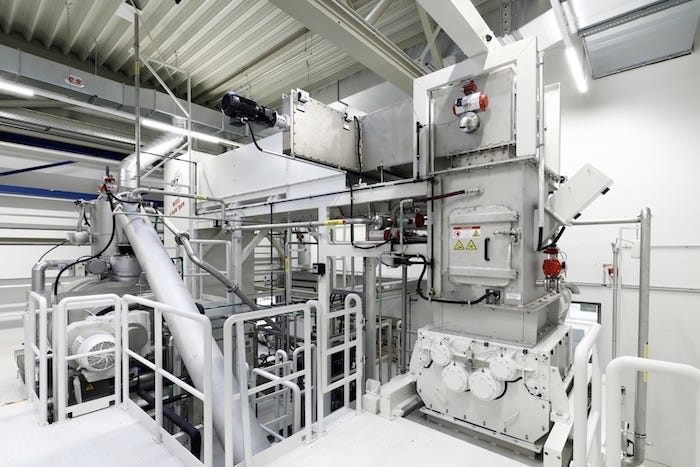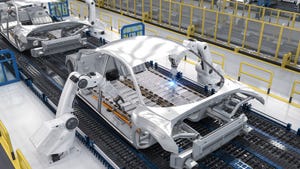- Design & Manufacturing
- Battery Recycling
- Automotive & Mobility
- Lithium Ion Batteries
- Materials
- Industry Outlook
What is the danger that spent EV batteries will someday clog our landfills?
February 6, 2021

One of the common and often quoted misconceptions about the electrification of transportation is that the lithium-ion batteries used in electric vehicles (EVs) can’t be or won’t be recycled. Naysayers envision public landfills stacked high with spent EV battery packs, each leaching highly poisonous chemicals into vulnerable groundwater. How this doomsday scenario came to be so prevalent is a bit of a mystery, as almost every automaker has committed to recycling spent batteries as the EV revolution takes hold.
Pilot Recycling Plant
Most recently, Volkswagen Group Components has opened its first plant for recycling electric car batteries in Salzgitter in Northern Germany. The aim of the pilot plant is the industrialized recovery of valuable raw materials such as lithium, nickel, manganese, and cobalt in a closed-loop together with aluminum, copper, and plastics, achieving a recycling rate of more than 90% over the long term.
“Volkswagen Group Components has achieved a further step in its sustainable end-to-end responsibility for the battery as a key component of electric mobility,” said Thomas Schmall, Member of the Board of Management of Volkswagen AG, Technical Division, and Chairman of the Board of Management of Volkswagen Group Components in a company news release. “We are implementing the sustainable recyclable materials cycle—and play a pioneering role in the industry for a future-oriented issue with great potential for climate protection and raw material supply,” he added.
No Melting
Volkswagen’s recycling process does not use intensive melting in a blast furnace to recover high-value materials. Instead, after the used batteries are delivered, deep discharged, and dismantled, the individual parts are ground into granules in a shredder and dried. The process yields aluminum, copper, and plastics, and a material called “black powder.” This contains important raw materials for batteries such as lithium, nickel, manganese, and cobalt, as well as graphite from the battery anode. Using water and chemical reagents, the back power undergoes a series of hydrometallurgical processes to separate the valuable materials so that they can be further refined and ultimately reused. (Image source: Volkswagen AG)
|
The battery systems are disconnected from all add-on parts and disassembled into their individual module. |
“As a consequence, essential components of old battery cells can be used to produce new cathode material,” explained Mark Möller, Head of the Business Unit Technical Development & E-Mobility. “From research, we know that recycled battery raw materials are just as efficient as new ones. In the future, we intend to support our battery cell production with the material we recover. Given that the demand for batteries and the corresponding raw materials will increase drastically, we can put every gram of recycled material to good use,” he added.
Second Use First
With VW planning on building 1.5 million EVs a year by 2025, the number of spent lithium-ion batteries available for recycling will continue to grow. But the plan is that the Salzgitter plant will only recycle batteries that can no longer be used for other purposes. Even after providing a useful life in an EV, some batteries are still powerful enough to be given a second life in mobile energy storage systems such as flexible rapid charging stations. These batteries will fulfill their new role before finally heading to the recycling facility. In any case, large volumes of battery return for recycling are not expected until the late 2020s at the earliest. The Salzgitter plant has been designed to initially recycle up to 3,600 battery systems per year during the pilot phase— equivalent to more than 1,600 tons— and the system will be scaled up to handle larger quantities even as the recycling process is continually optimized.
Recycling Will Grow
Commercially, one reason why EV battery recycling has been slow to take off has been the slow market uptake in EVs. That has begun to change as carmakers are finally introducing a variety of desirable vehicles, with long-range and prices that are becoming more competitive with their gasoline-powered counterparts. In addition, the cost of battery raw materials, which have been in a slump over the past couple of years, is beginning to rebound, and the value of metals like nickel and cobalt are making recycling an attractive alternative to using virgin materials. One thing is certain—there is no danger that millions of spent lithium-ion batteries will end up in landfills. (Image source: Volkswagen AG)
|
The mechanical shredder processes the battery modules into granulated materials for further processing. |
Kevin Clemens is an engineering consultant who has worked on automotive and environmental projects for more than 40 years.
About the Author(s)
You May Also Like







